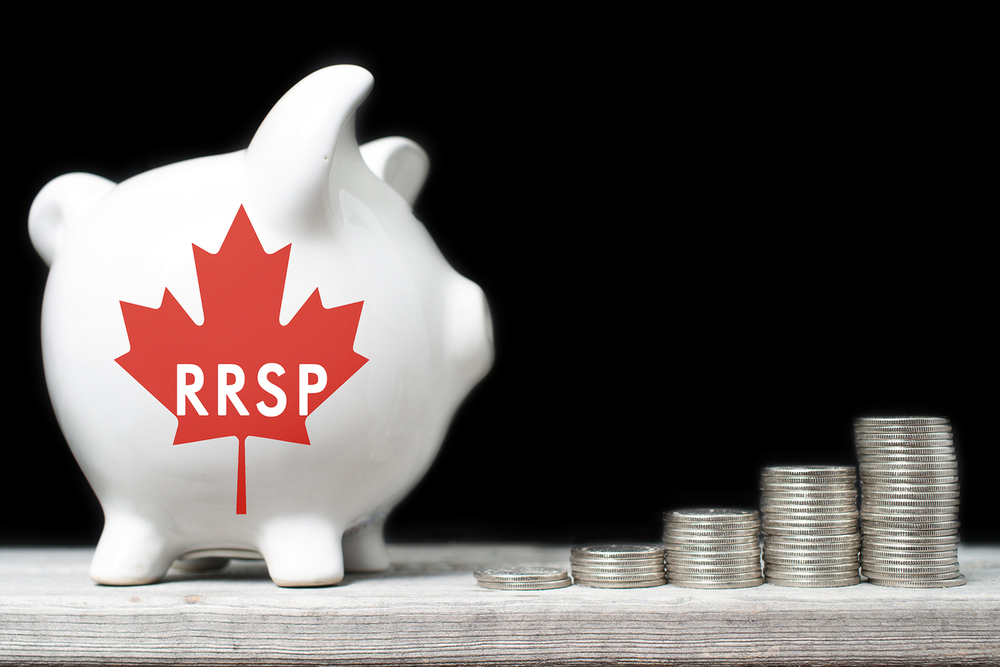The article “RRSP Top-Ups In Retirement Could Cost You” was originally published on MoneySense on March 7, 2018.
Remember: It’s not worth saving $5,000 of tax today to pay $10,000 of tax tomorrow
Q: I retired in May 2009 and was under the impression that I could no longer contribute to an RRSP. I just found out I could, and my 2016 notice of assessment shows I have available contribution room for 2017 of $25,749. Also, my RRSP/PRPP deduction limit for 2017 is $25,749. My pension income for 2017 is roughly $50,000. I split with my wife $20,000 of that total. My question is can I purchase and claim RRSPs to the maximum amount
—Tom
A: Most people don’t envision contributing to their Registered Retirement Savings Plan (RRSP) in retirement, Tom. But usually that’s because most retirees don’t have money sitting around that could be used and are instead drawing down their RRSPs. It doesn’t mean you can’t contribute though.
First, I’d like to help you decipher your notice of assessment. Canada Revenue Agency (CRA) does a horrible job, in my opinion, of explaining RRSPs on an annual tax assessment. I find lots of people get confused and some even end up putting too much into their RRSPs because the CRA’s info is so unclear.
To clarify, you have a $25,749 “RRSP/PRPP deduction limit for 2017.” This is how much you can contribute to an RRSP based on information reported to CRA up to and including December 31, 2016 (this should include RRSP contributions up to March 1, 2017 if you reported them correctly on your 2016 tax return). There’s a line below that says “unused RRSP/PRPP contributions previously reported and available to deduct for 2017.” This represents previously contributed, but undeducted RRSP contributions. You don’t have to deduct RRSP contributions in the year you make them. In your case, the undeducted contributions from the past must be zero and that’s why your “available contribution room for 2017” is the same number as your deduction limit – $25,749.
The ability to contribute to an RRSP is not tied to you working or being retired, Tom. At least not directly. Employment income and self-employment income during your working years creates RRSP room, but that room doesn’t expire because you retire. So, you can certainly contribute to your RRSP, if you are age 71 or younger or your wife is age 71 or under (in which case you could contribute to a spousal RRSP in her name and claim the deduction). The question I’d be asking though is whether you should contribute, Tom.
You mention you have pension income of $50,000, $20,000 of which is split with your wife (presumably this is eligible pension income split on your tax returns via pension income splitting). That suggests to me that you have $30,000 of income and your wife has $20,000. You may have other modest income sources, deductions or tax credits that impact your tax rate. Depending on your provincial of residence, a $25,749 RRSP contribution could save you and your wife roughly $5,000 in tax (roughly 20% of the contribution amount) and may increase your entitlement to certain government benefits. Assuming you have the cash available, you could make that contribution, or some portion thereof, Tom. You could even deduct the contribution over a couple years.
The more important consideration would be what your income will be in the future and what the tax implications of an eventual RRSP withdrawal might be. If you or your wife haven’t yet started your Canada Pension Plan (CPP) or Old Age Security (OAS) pensions, your incomes could rise in the future. You may have some existing RRSP investments as well. Withdrawals from your RRSPs, most commonly via a Registered Retirement Income Fund (RRIF) are required by age 72 at the latest. Will your CPP, OAS and RRSP/RRIF withdrawals put you into a higher tax bracket in the future? Is it worth saving $5,000 of tax today to pay $10,000 of tax tomorrow?
If you’re going to be in a similar or higher tax bracket in the future, I don’t know that I would contribute to your RRSP, Tom.
Are both of your Tax Free Savings Accounts (TFSAs) maxed out?
Do you expect to have any high-income years in the next few years, perhaps due to the sale of an asset like a cottage, rental property, business or non-registered investment that has risen in value and will have a taxable capital gain?
In summary, Tom, you can contribute to your RRSP. The question is whether you should and that’s a personalized decision based on an assessment of your financial situation. Try not to get enamoured by tax refunds at all costs if it means you’ll end up paying too high a price in the future in the form of tomorrow’s tax.
Jason Heath is a fee-only, advice-only Certified Financial Planner (CFP) at Objective Financial Partners Inc. in Toronto, Ontario. He does not sell any financial products whatsoever.

